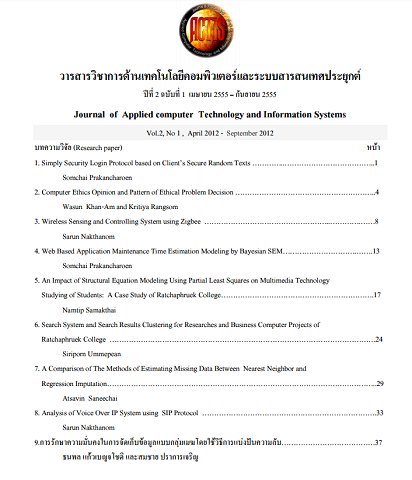A Comparison of The Methods of Estimating Missing Data Between Nearest Neighbor and Regression Imputation
Main Article Content
Abstract
Missing data are observations that we need to know but cannot acquire. This is a problem that is often found in survey researches. Researchers must find a way to solve this data analysis problem. If the missing data are handled by an inappropriate method, the result of the analysis might be distorted and, consequently, the analysis of the rest of valid data could be deviated. This research studies 2 methods of solving the problem of missing data, which are Nearest Neighbor Imputation and Regression Imputation using the criterion of the root mean square error (RMSE) in the comparison of errors. It is found out from the comparison that one method may be appropriate for particular data or things that need to be considered only. However, the method of estimating missing data by Nearest Neighbor Imputation (NNI) is the appropriate means when considering from the criterion of the root mean square error (RMSE) since it yields minimum values in all levels of missing values. The sample size equals 40.
Article Details
Section
ACTIS Article
It is the policy of ACTISNU to own the copyright to the published contributions on behalf of the interests of ACTISNU, its authors, and their employers, and to facilitate the appropriate reuse of this material by others. To comply with the Copyright Law, authors are required to sign an ACTISNU copyright transfer form before publication. This form, a copy of which appears in this journal (or website), returns to authors and their employers full rights to reuse their material for their own purposes.

